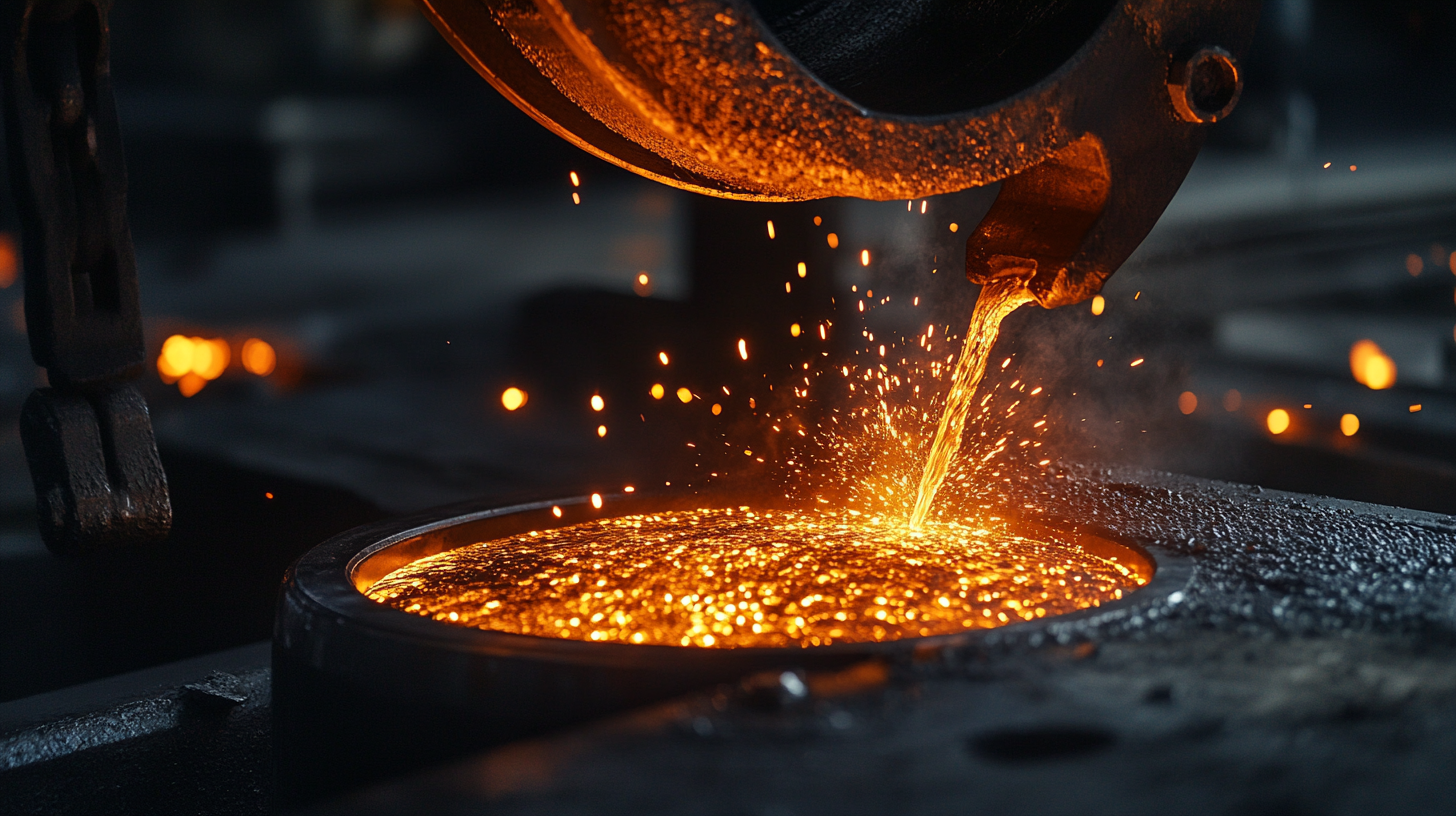 +86 180 0293 5268
+86 180 0293 5268






In the ever-evolving landscape of manufacturing, the demand for high-quality Stainless Steel Casting Parts continues to rise, driven by advancements in technology and material science. According to a recent market research report by Allied Market Research, the global stainless steel casting market is projected to reach $10.53 billion by 2027, growing at a CAGR of 6.3% from 2020 to 2027. This surge is largely attributed to the unique characteristics of stainless steel, such as its resistance to corrosion and exceptional strength, making it an ideal choice for various applications across industries. As “China Intelligent Manufacturing” continues to gain momentum, the production of stainless steel casting alternatives is not only meeting domestic demands but also capturing global markets with a commitment to quality assurance. This blog will delve into the distinctive features and applications of diverse stainless steel casting alternatives, highlighting their significance in the current manufacturing ecosystem.

The landscape of stainless steel casting is poised for significant transformation as we approach 2025, driven by advancements in technology and shifts in market demand. According to a recent report by Grand View Research, the global stainless steel casting market is projected to reach USD 18.37 billion by 2025, growing at a CAGR of 4.5%. This growth is largely attributed to the increasing utilization of stainless steel in various sectors such as aerospace, automotive, and marine industries, where durability and corrosion resistance are paramount.
Emerging trends indicate a growing interest in alternative casting solutions that offer better properties and performance. Innovations in additive manufacturing and investment casting are paving the way for lighter and stronger stainless steel components, which is critical for industries aiming to enhance efficiency and sustainability. The implementation of Industry 4.0 technologies is set to streamline production processes, reduce wastage, and increase customization capabilities, thereby making stainless steel casting a more attractive option for manufacturers. As these trends unfold, stakeholders will need to stay alert to adapt and capitalize on the evolving market dynamics.

Stainless steel casting alternatives have gained considerable attention in recent years due to their unique properties and applications in various industries. A comparative analysis reveals that options such as aluminum casting, nickel-based alloys, and titanium casting offer distinct benefits over conventional stainless steel. According to a report by Smithers Pira, the global market for alternative casting materials is projected to grow at a rate of 5.2% annually, driven by their increasing use in automotive, aerospace, and marine sectors.
Aluminum casting, for instance, is noted for its excellent strength-to-weight ratio and corrosion resistance. Data from the Aluminum Association indicates that aluminum components can be up to 35% lighter than their stainless steel counterparts while maintaining similar structural integrity. Meanwhile, nickel-based alloys provide superior high-temperature performance, suitable for applications in gas turbines and chemical processing, which can withstand temperatures exceeding 1,600 degrees Fahrenheit. A study by GfK market research found that the demand for nickel alloys is expected to rise by 7% in the next five years, reflecting their critical role in industrial applications.
Moreover, titanium casting is emerging as a compelling alternative due to its exceptional strength and biocompatibility, particularly in the medical field. The global titanium market is estimated to reach $6.71 billion by 2028, as highlighted in a 2022 report by Grand View Research. The lightweight and durable nature of titanium parts makes them ideal for high-performance applications, thereby solidifying their position as a viable stainless steel casting alternative.
In recent years, various industries have increasingly explored innovative applications of alternative materials to stainless steel casting, driven by demands for sustainability and cost-effectiveness. Notably, the global market for alternative materials, including aluminum alloys and polymer composites, is projected to reach $250 billion by 2025, according to a report by MarketsandMarkets. These materials offer significant advantages such as reduced weight, enhanced corrosion resistance, and improved thermal conductivity, making them suitable substitutes in sectors such as automotive, aerospace, and construction.
For instance, in the automotive industry, manufacturers are adopting aluminum die casting to achieve lightweight vehicle designs that enhance fuel efficiency. This shift is supported by a 20% increase in the use of aluminum in vehicle structures, as reported by the Aluminum Association. Additionally, polymer composites are making inroads in the aerospace industry, where their high strength-to-weight ratio is particularly beneficial. With an expected CAGR of 10% over the next five years, the demand for these materials reflects a broader trend toward innovative engineering solutions that prioritize performance without compromising structural integrity.
The stainless steel casting industry is increasingly recognizing the importance of sustainability, with eco-friendly practices becoming paramount for 2025 and beyond. According to a recent report by the International Stainless Steel Forum, the global stainless steel market is expected to grow by 5.6% annually, emphasizing the need for manufacturers to adopt greener methods to meet rising demands without further harming the environment. One of the most promising approaches involves utilizing recycled materials; estimates show that recycling stainless steel can reduce energy consumption by up to 60% compared to producing new steel.

Furthermore, innovative techniques such as investment casting and 3D printing are gaining traction as they offer significant reductions in waste and material use. The American Foundry Society projects that these methods can cut manufacturing waste by 30-50%, making them not only economically viable but also environmentally friendly options. Companies are focusing on reducing their carbon footprint, and by 2025, it is expected that 70% of the industry will integrate more sustainable practices into their casting processes, setting a new standard for ecological responsibility in metalwork.
The stainless steel casting sector is currently navigating a complex landscape marked by exciting opportunities and daunting challenges. With an anticipated shortage of carbon steel scrap by 2030, the industry must pivot swiftly to adapt and innovate. This looming crisis calls for stakeholders to reassess their strategies, emphasizing the need for alternative materials and processes that can mitigate the impact of dwindling resources. The push for sustainability is also reshaping how manufacturers view the long-term viability of stainless steel casting as they seek environmentally friendly solutions that align with contemporary regulatory frameworks.
Moreover, the ongoing transformation within the steel industry presents a significant opportunity for those ready to embrace change. Companies that invest in advanced technologies, such as artificial intelligence and cleaner production methods, may find themselves at the forefront of a new industrial era.
As traditional methods become less viable, the emphasis on developing innovative materials and processes will be critical. The stainless steel casting market, projected to grow substantially in the coming years, is well-positioned to leverage these trends, creating a fertile ground for businesses looking to thrive amid shifting market dynamics.
